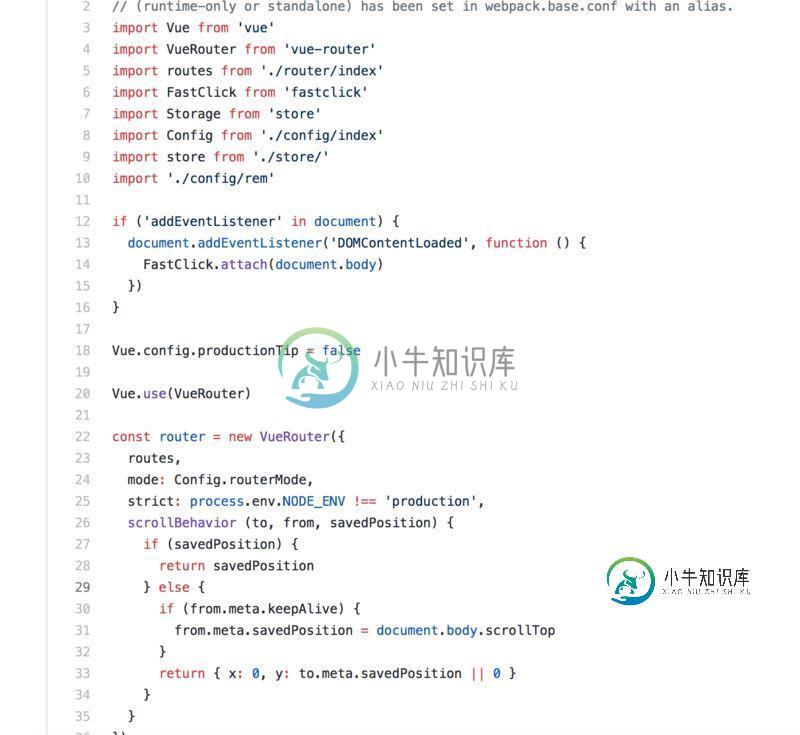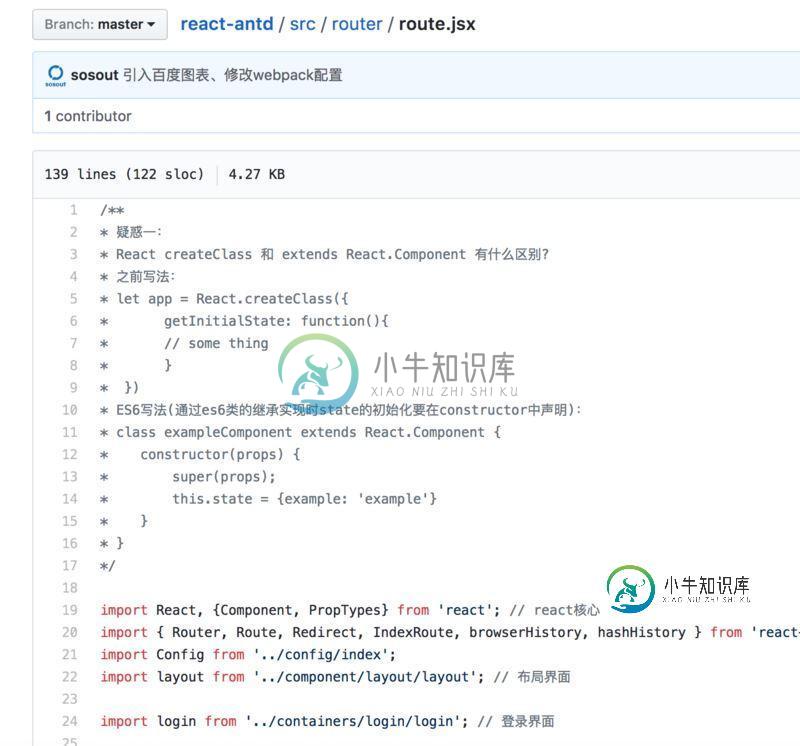vue、react等单页面项目部署到服务器的方法及vue和react的区别
最近好多伙伴说,我用vue做的项目本地是可以的,但部署到服务器遇到好多问题:资源找不到,直接访问index.html页面空白,刷新当前路由404。。。用react做的项目也同样遇到类似问题。现在我们一起讨论下单页面如何部署到服务器?
由于前端路由缘故,单页面应用应该放到nginx或者apache、tomcat等web代理服务器中,千万不要直接访问index.html,同时要根据自己服务器的项目路径更改react或vue的路由地址。
如果说项目是直接跟在域名后面的,比如:http://www.sosout.com ,根路由就是 '/'。
如果说项目是直接跟在域名后面的一个子目录中的,比如: http://www.sosout.com/children ,根路由就是 '/children ',不能直接访问index.html。
以配置Nginx为例,配置过程大致如下:(假设:
1、项目文件目录: /mnt/html/spa(spa目录下的文件就是执行了npm run dist 后生成的dist目录下的文件)
2、访问域名:spa.sosout.com)
进入nginx.conf新增如下配置:
server {
listen 80;
server_name spa.sosout.com;
root /mnt/html/spa;
index index.html;
location ~ ^/favicon\.ico$ {
root /mnt/html/spa;
}
location / {
try_files $uri $uri/ /index.html;
proxy_set_header Host $host;
proxy_set_header X-Real-IP $remote_addr;
proxy_set_header X-Forwarded-For $proxy_add_x_forwarded_for;
proxy_set_header X-Forwarded-Proto $scheme;
}
access_log /mnt/logs/nginx/access.log main;
}
注意事项:
1、配置域名的话,需要80端口,成功后,只要访问域名即可访问的项目
2、如果你使用了react-router的 browserHistory 模式或 vue-router的 history 模式,在nginx配置还需要重写路由:
server {
listen 80;
server_name spa.sosout.com;
root /mnt/html/spa;
index index.html;
location ~ ^/favicon\.ico$ {
root /mnt/html/spa;
}
location / {
try_files $uri $uri/ @fallback;
index index.html;
proxy_set_header Host $host;
proxy_set_header X-Real-IP $remote_addr;
proxy_set_header X-Forwarded-For $proxy_add_x_forwarded_for;
proxy_set_header X-Forwarded-Proto $scheme;
}
location @fallback {
rewrite ^.*$ /index.html break;
}
access_log /mnt/logs/nginx/access.log main;
}
为什么要重写路由?因为我们的项目只有一个根入口,当输入类似/home的url时,如果找不到对应的页面,nginx会尝试加载index.html,这是通过react-router或vue-router就能正确的匹配我们输入的/home路由,从而显示正确的home页面,如果browserHistory模式或history模式的项目没有配置上述内容,会出现404的情况。
简单举两个例子,一个vue项目一个react项目:
vue项目:
域名:http://tb.sosout.com

############
# 其他配置
############
http {
############
# 其他配置
############
server {
listen 80;
server_name tb.sosout.com;
root /mnt/html/tb;
index index.html;
location ~ ^/favicon\.ico$ {
root /mnt/html/tb;
}
location / {
try_files $uri $uri/ @fallback;
index index.html;
proxy_set_header Host $host;
proxy_set_header X-Real-IP $remote_addr;
proxy_set_header X-Forwarded-For $proxy_add_x_forwarded_for;
proxy_set_header X-Forwarded-Proto $scheme;
}
location @fallback {
rewrite ^.*$ /index.html break;
}
access_log /mnt/logs/nginx/access.log main;
}
############
# 其他配置
############
}

import App from '../App'
// 首页
const home = r => require.ensure([], () => r(require('../page/home/index')), 'home')
// 物流
const logistics = r => require.ensure([], () => r(require('../page/logistics/index')), 'logistics')
// 购物车
const cart = r => require.ensure([], () => r(require('../page/cart/index')), 'cart')
// 我的
const profile = r => require.ensure([], () => r(require('../page/profile/index')), 'profile')
// 登录界面
const login = r => require.ensure([], () => r(require('../page/user/login')), 'login')
export default [{
path: '/',
component: App, // 顶层路由,对应index.html
children: [{
path: '/home', // 首页
component: home
}, {
path: '/logistics', // 物流
component: logistics,
meta: {
login: true
}
}, {
path: '/cart', // 购物车
component: cart,
meta: {
login: true
}
}, {
path: '/profile', // 我的
component: profile
}, {
path: '/login', // 登录界面
component: login
}, {
path: '*',
redirect: '/home'
}]
}]
react项目:
域名:http://antd.sosout.com

/**
* 疑惑一:
* React createClass 和 extends React.Component 有什么区别?
* 之前写法:
* let app = React.createClass({
* getInitialState: function(){
* // some thing
* }
* })
* ES6写法(通过es6类的继承实现时state的初始化要在constructor中声明):
* class exampleComponent extends React.Component {
* constructor(props) {
* super(props);
* this.state = {example: 'example'}
* }
* }
*/
import React, {Component, PropTypes} from 'react'; // react核心
import { Router, Route, Redirect, IndexRoute, browserHistory, hashHistory } from 'react-router'; // 创建route所需
import Config from '../config/index';
import layout from '../component/layout/layout'; // 布局界面
import login from '../containers/login/login'; // 登录界面
/**
* (路由根目录组件,显示当前符合条件的组件)
*
* @class Roots
* @extends {Component}
*/
class Roots extends Component {
render() {
// 这个组件是一个包裹组件,所有的路由跳转的页面都会以this.props.children的形式加载到本组件下
return (
<div>{this.props.children}</div>
);
}
}
// const history = process.env.NODE_ENV !== 'production' ? browserHistory : hashHistory;
// 快速入门
const home = (location, cb) => {
require.ensure([], require => {
cb(null, require('../containers/home/homeIndex').default)
}, 'home');
}
// 百度图表-折线图
const chartLine = (location, cb) => {
require.ensure([], require => {
cb(null, require('../containers/charts/lines').default)
}, 'chartLine');
}
// 基础组件-按钮
const button = (location, cb) => {
require.ensure([], require => {
cb(null, require('../containers/general/buttonIndex').default)
}, 'button');
}
// 基础组件-图标
const icon = (location, cb) => {
require.ensure([], require => {
cb(null, require('../containers/general/iconIndex').default)
}, 'icon');
}
// 用户管理
const user = (location, cb) => {
require.ensure([], require => {
cb(null, require('../containers/user/userIndex').default)
}, 'user');
}
// 系统设置
const setting = (location, cb) => {
require.ensure([], require => {
cb(null, require('../containers/setting/settingIndex').default)
}, 'setting');
}
// 广告管理
const adver = (location, cb) => {
require.ensure([], require => {
cb(null, require('../containers/adver/adverIndex').default)
}, 'adver');
}
// 组件一
const oneui = (location, cb) => {
require.ensure([], require => {
cb(null, require('../containers/ui/oneIndex').default)
}, 'oneui');
}
// 组件二
const twoui = (location, cb) => {
require.ensure([], require => {
cb(null, require('../containers/ui/twoIndex').default)
}, 'twoui');
}
// 登录验证
const requireAuth = (nextState, replace) => {
let token = (new Date()).getTime() - Config.localItem('USER_AUTHORIZATION');
if(token > 7200000) { // 模拟Token保存2个小时
replace({
pathname: '/login',
state: { nextPathname: nextState.location.pathname }
});
}
}
const RouteConfig = (
<Router history={browserHistory}>
<Route path="/home" component={layout} onEnter={requireAuth}>
<IndexRoute getComponent={home} onEnter={requireAuth} /> // 默认加载的组件,比如访问www.test.com,会自动跳转到www.test.com/home
<Route path="/home" getComponent={home} onEnter={requireAuth} />
<Route path="/chart/line" getComponent={chartLine} onEnter={requireAuth} />
<Route path="/general/button" getComponent={button} onEnter={requireAuth} />
<Route path="/general/icon" getComponent={icon} onEnter={requireAuth} />
<Route path="/user" getComponent={user} onEnter={requireAuth} />
<Route path="/setting" getComponent={setting} onEnter={requireAuth} />
<Route path="/adver" getComponent={adver} onEnter={requireAuth} />
<Route path="/ui/oneui" getComponent={oneui} onEnter={requireAuth} />
<Route path="/ui/twoui" getComponent={twoui} onEnter={requireAuth} />
</Route>
<Route path="/login" component={Roots}> // 所有的访问,都跳转到Roots
<IndexRoute component={login} /> // 默认加载的组件,比如访问www.test.com,会自动跳转到www.test.com/home
</Route>
<Redirect from="*" to="/home" />
</Router>
);
export default RouteConfig;

############ # 其他配置 ############ http { ############ # 其他配置 ############ server { listen 80; server_name antd.sosout.com; root /mnt/html/reactAntd; index index.html; location ~ ^/favicon\.ico$ { root /mnt/html/reactAntd; } location / { try_files $uri $uri/ @router; index index.html; proxy_set_header Host $host; proxy_set_header X-Real-IP $remote_addr; proxy_set_header X-Forwarded-For $proxy_add_x_forwarded_for; proxy_set_header X-Forwarded-Proto $scheme; } location @router { rewrite ^.*$ /index.html break; } access_log /mnt/logs/nginx/access.log main; } ############ # 其他配置 ############ }
下面看下vue和react区别
前端都知道3个主流框架,vue,react,anjular,当然目前最火的还是vue和react,那么vue 和react 的区别?
相同点:
1.都支持服务器端渲染
2.都有Virtual DOM,组件化开发,通过props参数进行父子组件数据的传递,都实现webComponent规范
3.数据驱动视图
4.都有支持native的方案,React的React native,Vue的weex
5.都有管理状态,React有redux,Vue有自己的Vuex(自适应vue,量身定做)
不同点:
1.React严格上只针对MVC的view层,Vue则是MVVM模式
2.virtual DOM不一样,vue会跟踪每一个组件的依赖关系,不需要重新渲染整个组件树.
而对于React而言,每当应用的状态被改变时,全部组件都会重新渲染,所以react中会需要shouldComponentUpdate这个生命周期函数方法来进行控制
3.组件写法不一样, React推荐的做法是 JSX + inline style, 也就是把HTML和CSS全都写进JavaScript了,即'all in js';
Vue推荐的做法是webpack+vue-loader的单文件组件格式,即html,css,jd写在同一个文件;
4.数据绑定: vue实现了数据的双向绑定,react数据流动是单向的
5.state对象在react应用中不可变的,需要使用setState方法更新状态;
在vue中,state对象不是必须的,数据由data属性在vue对象中管理;
就对我而言吧,vue适合开发移动端项目,react适合开发pc端项目(个人观点),
当然我还是喜欢 React,毕竟后台大,哈哈,虽然现在升级到16版本了(不喜勿喷)
总结
以上所述是小编给大家介绍的vue、react等单页面项目应用部署到服务器的方法,希望对大家有所帮助,如果大家有任何疑问请给我留言,小编会及时回复大家的。在此也非常感谢大家对小牛知识库网站的支持!
-
本文向大家介绍Vue-cli项目部署到Nginx服务器的方法,包括了Vue-cli项目部署到Nginx服务器的方法的使用技巧和注意事项,需要的朋友参考一下 0. Nginx使用 以windows版为例,下载niginx压缩包并解压到任意目录,双击nginx.exe,在浏览器中访问http://localhost,如果出现Welcome to nginx!页面则说明成功。 nginx常用命令如下:
-
本文向大家介绍Vue 项目部署到服务器的问题解决方法,包括了Vue 项目部署到服务器的问题解决方法的使用技巧和注意事项,需要的朋友参考一下 相信很多小伙伴在用Vue-cli安装的脚手架开发的时候,在开发环境中项目可以很正常的运行,但是进入到生产环境,编译打包后,放入服务器,项目就不正常了,会出现空白页或者路由跳转404等问题。遇到这些问题不要慌张,正确的配置加上后端的简单配合就可以解决。 如何打包
-
本文向大家介绍apache下面二级目录部署react/vue的方法,包括了apache下面二级目录部署react/vue的方法的使用技巧和注意事项,需要的朋友参考一下 本文主要是记录一下在apache二级目录上面部署react和vue项目。根目录下面部署很简单,但是在二级目录下就需要在webpack的配置或者vue-cli的配置文件以及路由组件做一些简单调整。由于mac系统自己带了apache,所
-
本文向大家介绍vue项目部署到nginx/tomcat服务器的实现,包括了vue项目部署到nginx/tomcat服务器的实现的使用技巧和注意事项,需要的朋友参考一下 开发完的vue项目,需要部署到Nginx/Tomcat服务器上运行,作为一个前端小白,刚接触vue不久,研究了一番,于是写下这篇文章,记录下来便于今后部署。 1.router(history)模式vue项目部署到nginx 1)修改
-
前段时间项目组计划快速开发一个新的App项目,App开发那边提供壳子和部分系统级功能,所有的页面由h5完成,考虑兼容性安卓4.1及ios7.1。全新的项目,没有历史包袱,就尝试了新的开发模式,采用了webpack + vue-cli + vue-router + es6 + axios这一套,从webpack配置到文件目录,从开发流程到上线部署,摸索尝试,到目前第一版已经上线。后面会继续优化,先把
-
本文向大家介绍vue项目部署到Apache服务器中遇到的问题解决,包括了vue项目部署到Apache服务器中遇到的问题解决的使用技巧和注意事项,需要的朋友参考一下 最近刚重构完,我们的一个项目,由原来的jsp模式改为了前后端分离,前端选型为vue,开发完成之后第一件时间就是要部署测试,服务端选的是Apache。本来以为很简单的一件事情,几经坎坷部署了两天才算能够正常访问了。先记录如下, 过程搭建A

